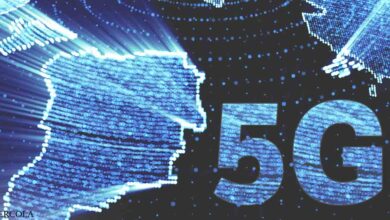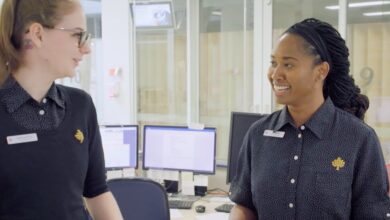Can wireless diagnostic tools transform chronic care management?


There have been significant advances in noninvasive diagnostic technology in recent years, and the technology could transform medicine.
Most immediately, transformation is coming from noninvasive blood glucose monitoring that frees millions of people with diabetes from painful, unaffordable, disposable and disruptive means of measuring glucose by introducing sensor technology. And eventually, for all patients managing health conditions and for healthy individuals looking to prevent chronic disease.
The key to this transformation is harnessing the power of radio frequencies. Every molecule has a unique frequency fingerprint, and by creating a device that detects and converts these molecular fingerprints into exact biometrics using radio waves, like blood glucose levels, health IT vendor Know Labs has figured out how to monitor everything happening inside the body with a simple sensor instead of the options available today.
This is the life’s work of Ron Erickson, founder and CEO of Know Labs. We interviewed Erickson to gain his expertise on noninvasive sensor technology and the liberation of using RF, and safely, in medical diagnostics.
Q. What are the major challenges for clinicians and healthcare provider organizations with managing diabetes today?
A. Accessibility and affordability are foundational to managing diabetes. Incidences of diabetes and prediabetes have been growing for decades to what many anticipate could be the most significant epidemic in modern history.
Roughly 537 million people worldwide ages 20-79 years are currently living with diabetes, which makes up 10.5% of the world’s population in this age group. On top of this already significant number, an estimated 240 million people are living with undiagnosed diabetes worldwide, meaning almost one-in-two adults are unaware they have diabetes.
As we too often observe, chronic disease disproportionately affects vulnerable, more rural populations – where access and affordability are significant barriers. Of the 240 million people with undiagnosed diabetes, nearly 90% live in low- and middle-income countries.
In the U.S. specifically, diabetes prevalence is highest in the Southern and Appalachian states.
The lack of accessible, affordable healthcare is a huge factor in our population’s poor health outcomes. As of March 2022, an estimated 112 million American adults – almost half our population – reported having a difficult time paying for healthcare. And as of 2021, 27.5 million nonelderly individuals were uninsured.
These numbers help underscore how unattainable U.S. healthcare has become for many, and the unfortunate truth is most of the drivers of high costs aren’t necessarily critical for treatment. The largest proportionate cost for people managing their diabetes is not insulin, its supplies.
According to an analysis by GoodRx, an insured person with diabetes who uses insulin typically spends $4,882 a year on treatment. Of that, $3,992 is spent on supplies or more than 80% of the annual expense of managing the disease.
The lack of accessibility and affordability of current diabetes management solutions is leading to life-threatening outcomes due to a lack of adherence to a clinical treatment plan. To mitigate the risks associated with diabetes management, it is crucial to regulate blood glucose levels through lifestyle modifications, oral medications or insulin injections.
To monitor blood glucose, people must rely on invasive portable measurement devices that require frequent finger pricking and disposable test strips, which are painful, and generate recurring expenses. In some cases, patients may need up to ten blood glucose measurements per day, which can be exceedingly uncomfortable and disruptive to daily life.
A study from the National Health and Nutrition Examination Survey (NHANES) found 29% of patients on insulin, 65% of patients on oral agents and 80% of patients using diet alone had never monitored their blood glucose. Moreover, only 39% of patients using insulin and only 5-6% of those using oral agents had measured their blood glucose daily.
The number of adults living with diabetes is predicted to rise to 643 million by 2030 and 783 million by 2045. This growing problem urgently requires better solutions.
Q. How is the health IT industry advancing noninvasive monitoring technology that could transform the way millions of people manage chronic conditions?
A. Noninvasive medical diagnostics is on the brink of changing the way we think about and manage health forever. Eventually, the advancement of sensor technology will allow people to detect and quantify every analyte in the human body on a molecular level.
The introduction of LEDs and optical sensing technologies for health and wellness applications have become pervasive. More recently, emerging developers are exploring various methods of measuring blood glucose and other analytes with radio frequency or microwave sensing techniques.
These techniques are showing promise for quantifying blood glucose noninvasively – what has been well documented as extremely challenging and accurately described in the essay entitled, “The Pursuit of Noninvasive Glucose: “Hunting the Deceitful Turkey.”
With digital biometric data-driven insights that can tell us exactly what is happening in the body continuously and accurately, this emerging technology will help patients and doctors improve decision-making, care outcomes, wellness maintenance and overall quality of life – a revolutionary breakthrough. Noninvasive medical diagnostics could be the Holy Grail of the medical industry and patient care where the traditional blood draw and other standards of care become obsolete.
And without the need for a blood draw with noninvasive determination of biomarkers relating to health and wellness, this could make remote and telemedicine a practical, hospital-grade reality.
Currently, there are no medical-grade, commercially available, noninvasive means of measuring blood glucose. So, there is a huge unmet need to empower billions of people with a more accessible solution for managing their condition and a glaring opportunity to help people with prediabetes from advancing to diabetes before it is too late.
While this technology will help providers deliver more informed, personalized care, it will allow patients to take charge of their own health in a way they’ve never been able to before. People with chronic conditions will have access to real-time, accurate data so they stay in the know about what’s happening in their body.
Noninvasive diagnostic devices will give patients the critical insights they need to stay informed and make timely decisions to maintain health and empower them to do so in a way that is convenient, painless and affordable.
Q. You’ve completed a diabetes management device prototype that uses RFID networking technology. Why do you think RFID is a good technology for this challenge?
A. When you look at the innovators in diagnostic technology, you’ll observe two paths the industry is taking to develop the first noninvasive blood glucose monitor.
The first and more common approach seen from Apple and Samsung, for example, is optical spectroscopy. Optical sensors detect and measure glucose under the skin.
However, I’ve been in this space for a long time, and also built optical sensing technology in the early days of our company in pursuit of delivering the first noninvasive blood glucose monitor. We quickly became acutely aware of the limitations with optical sensing.
LEDs simply are not a viable solution because they’re not only expensive, they also tend to burn out, and they lack the flexibility needed to measure different analytes with the same configuration. They also have limitations based on the diversity of the human population in terms of skin pigmentation, skin thickness, BMI and other human characteristics.
The second approach is through radio frequency spectroscopy. Biomedical RFID is a technology that uses electromagnetic energy in the form of radio waves to noninvasively capture molecular signatures and convert them into meaningful information.
Because molecules of different substances vibrate at different frequencies, RF technology is able to detect the presence of glucose in the blood, in addition to other biomarkers. More specifically, the RF and microwave range is across roughly 400,000 wavelengths or frequencies, whereas LEDs have set frequencies that cannot change.
RF sensors’ ability to move freely across this range makes it possible to measure a frequency response in a variety of substrates both organic and inorganic, where optics simply cannot reach.
RF is the most reliable solution for noninvasively measuring blood glucose because it can generate large amounts of data and it isn’t inhibited in the way optical sensors are by varying human factors like melanin levels, BMI levels or skin thickness, because RF can safely penetrate the full cellular stack.
Over the years we’ve tried and tested more than 100 iterations of the sensor and have worked with top engineers and industrial design experts throughout development. Early results of the application of RF sensor technology have seen success in the ability to noninvasively measure blood glucose accurately and repeatedly.
As best practice with all new sensor technology development, continuous refinement is required. The population of people living with diabetes is global, and therefore it is imperative that clinical research collecting data from a very large and diverse population in different testing environments is conducted.
The technology is therefore designed to be modular – allowing for miniaturization for portability to different testing locations and ultimately to become form factor agnostic and able to fit into any wearable.
Q. How is the advancement of artificial intelligence and machine learning to speed up research processes helping boost better technology options for improving diabetes management?
A. Machine learning is revolutionizing biomedical research. Machine learning allows for faster and more accurate development of algorithms that can improve healthcare outcomes. It enables innovators to more readily analyze massive amounts of complex data and speed up advanced pattern recognition that would’ve been near impossible before.
Before the application of machine learning, conducting and learning from clinical research would burn through resources and have a higher likelihood for error because manually managing such large, novel datasets is nearly impossible. Because machine learning models process huge datasets quickly and can identify patterns without human intervention, results are more accurate and timelier.
Machine learning models must be refined and improved constantly as expansive clinical research is conducted and billions of data are analyzed. Consistent advancement in this area is an important step in getting to the level of stability and repeatability needed to bring this innovation to the masses so it can make diabetes management a convenient and supportive experience.
Q. What do you think the massive prediabetes and diabetes population looks like in five years from the standpoint of supportive technologies?
A. Candidly, I am very concerned about what the future looks like. As countries around the world develop and advance with growing low- and middle-income populations, food consumption patterns are changing, and more are eating in ways that inevitably lead to the onset of diabetes. I am stunned, for example, to learn that 27% of the Pakistan population suffers from diabetes.
It always comes back to access and affordability. Preventative care and supportive technologies cost money and remain out of reach to millions of people around the world that need them. My hope is that through continuous innovation and focus in these systemic areas, we will see equitable care become a reality for the global population suffering from chronic disease.
We must continue working to improve the quality of life for everyone with prediabetes and diabetes because current solutions are falling short. I see a world where people can accurately and continuously measure different aspects of their body on a molecular level without needing a drop of blood or a probe of any kind.
A truly noninvasive, FDA-approved blood glucose monitoring solution is the Holy Grail. Ultimately, if successful – the deployment of this technology will unequivocally improve population level health.
Follow Bill’s HIT coverage on LinkedIn: Bill Siwicki
Email him: [email protected]
Healthcare IT News is a HIMSS Media publication.




